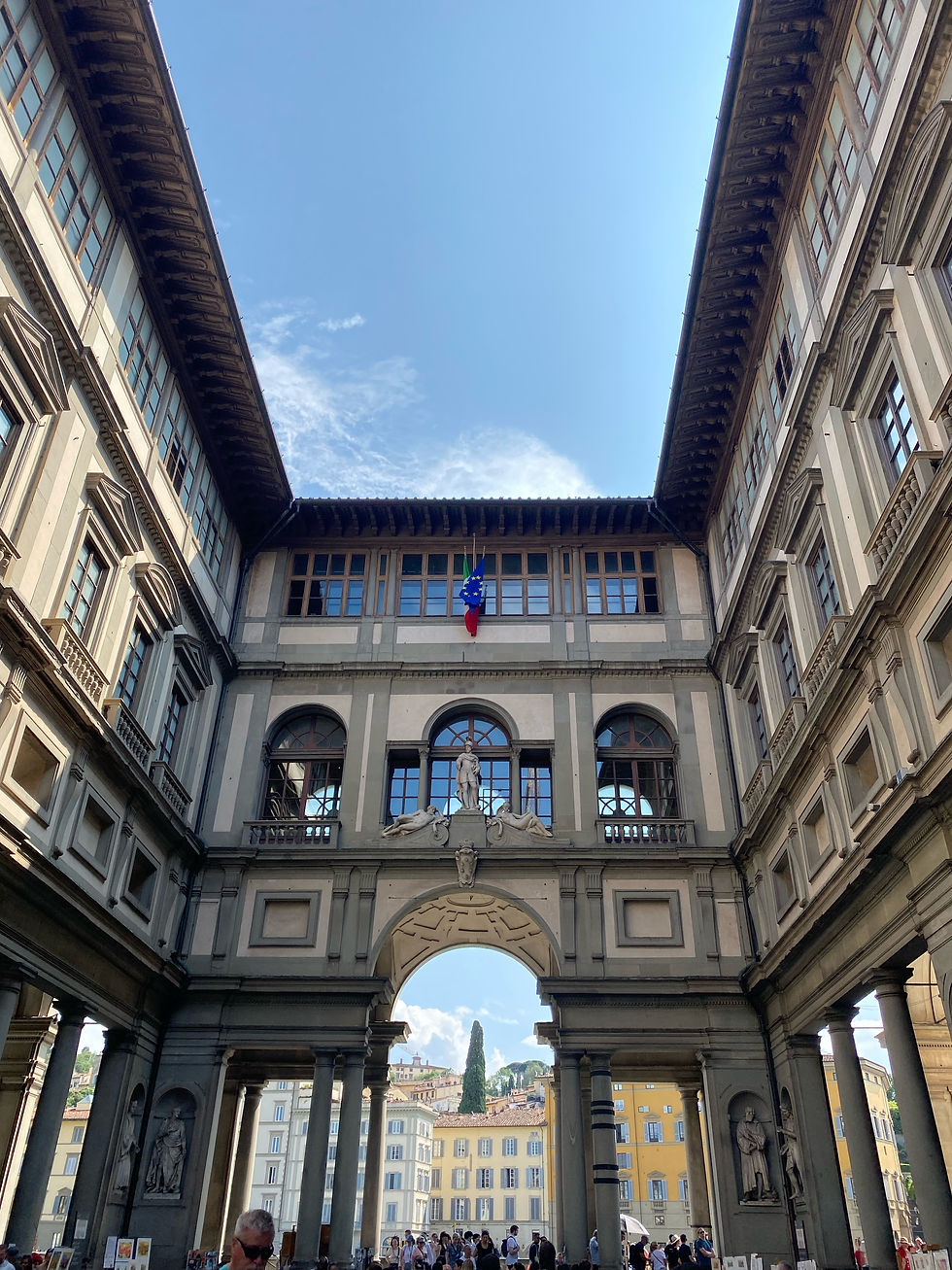Marble and Brick: The Medieval City
- Corey Fiske
- May 30, 2023
- 4 min read
Updated: May 31, 2023
By Corey Fiske
Stepping into the medieval city is like stepping into a portal to the past. Filled with culture and character, Siena has something new to discover with every turn. It was built upon three hills, creating a unique flow and interesting architectural opportunities.
Only about 78 kilometers from Florence, Siena is a must visit, not only for its architectural ambition but its cultural spirit.

The 17 Contrade

Siena is divided into 17 different neighborhoods, or contrade in Italian. Each contrada is named after an animal or symbol. The contrade are the eagle, caterpillar, snail, owl, dragon, giraffe, porcupine, unicorn, she-wolf, seashell, goose, wave, panther, forest, tortoise, tower, and the ram.
These distinct neighborhoods date back to the Middle Ages. Originally, there were 59 established contrade, but over time they have been reduced to 17. Each contrade has its own community with its own museum and church.
A contrada will perform a secular baptism for all the newborn babies to induct them into the community. At this baptism in the contrada fountain, they receive a special scarf that they will keep with them all their life.
Every July and August, ten of the contrade compete in a horse race known as the Palio di Siena. The race takes place in the Piazza del Campo.
Piazza del Campo
The unusual Piazza del Campo is a sight to behold. Walking into Siena’s main square, visitors can feel and see the unique curvature of the shell-shaped plaza.
Ilaria Bichi Ruspoli is a tour guide in Siena. She is Italian but moved to Siena later in life. She states, “The Piazza del Campo wasn’t designed by an architect. It was designed by nature.”
It was the natural formation of Siena’s three hills that caused the square to be formed in a shell-shape. The ground dips down lower in the center and rises on the sides. The three main city streets branch off from the Piazza del Campo and it is surrounded by buildings, like the town hall.
The Piazza del Campo is a meeting place for all 17 contrade.
The Duomo

Not just Florence has a Duomo. A duomo is actually translated to mean a cathedral, not a dome. The Duomo in Siena is known officially as the Metropolitan Cathedral of Santa Maria Assunta. It is the main place of Catholic worship in Siena.
Completed in 1370, Siena’s Duomo has stood the test of time, featuring vaulted archways, striped columns, and religious artwork.
Bill and Robin O’Connell of Amherst, Massachusetts have been lucky enough to have visited many cathedrals around Italy and Spain. They say, “One thing that is different about this cathedral compared to the cathedrals in Spain is the use of gold. There is so much more gold in Spain.”
Spain was only of the early colonizers of South America, allowing them to mine the ample gold reserves. This gave them the resources to utilize more gold in their cathedrals. Italy, on the other hand, did not have nearly as much gold, causing them to be more deliberate in their choices about where the gold would go. This conveys that every use of gold had importance. This is evident in the use of gold stars in the dome, which Robin O’Connell called the cathedral’s “most striking feature.”

The Duomo’s Marble Floor
Walking into the Romanesque, Italian Gothic cathedral, one is at first tempted to look up, when really they should be looking down. The marble floor of the Duomo is unlike any other, telling a story through mosaics as you walk through the ornamental room.
Ilaria Bichi Ruspoli describes the floor as “a book written in the marble that millions of people have read over the centuries.”

The floor acts a connection between the past and present. People from Siena and visitors from all over the world have gazed upon the floor and have been able to understand the stories the floor conveyed. People always wonder if walls could talk, but this floor does so much more.
Despite some of the mosaics featuring latin text, the overall theme can still be understood by visitors. The dramatic images are hard to look away from. The floor is made of 56 panels in differing sizes.
The marble floor of the Duomo recounts key stories from the Bible.
The Duomo Expansion

When the cathedral was finished, the people of Siena were upset with the Cathedral’s size. The cathedral is smaller than the iconic Florence Duomo. To compete, the people of Siena began construction to increase the size of their Duomo, which would also change its orientation.
However, this expansion would never be completed. They built up a wall that still stands today but then construction ceased.
The Black Death was a pandemic in 1346 to 1353 that wreaked havoc in Western Eurasia and North Africa. It is the most fatal pandemic in human history. Because of the Black Death, Siena no longer had the manpower to complete the Duomo’s expansion. Additionally, the small Duomo could now accommodate the city’s smaller population.
Today, the land that was once set aside for the expansion is now a parking lot. Cars are lined up next to the cathedral and what should have been the church’s exterior wall.
Marble and Brick
Visiting Siena’s duomo is relevant to everyone, not only Catholics, for its stunning architecture.
Ilaria Bichi Ruspoli highlights, “The Duomo is the only building made of marble in a city made of brick.”
This contrast between the Duomo and the rest of the medieval city highlights the importance of the cathedral, but visitors should also strive to walk through the 17 contrade. Each step taken is a step through time, allowing travelers to soak up every bit of its amazing culture. The brick buildings of the rest of the city are fantastic examples of medieval architecture that everyone must see for their own eyes.



























Comments